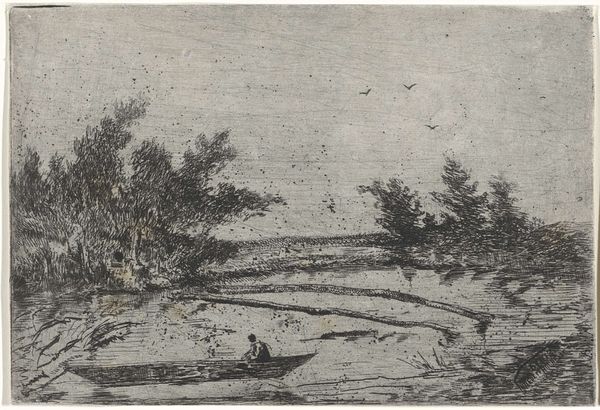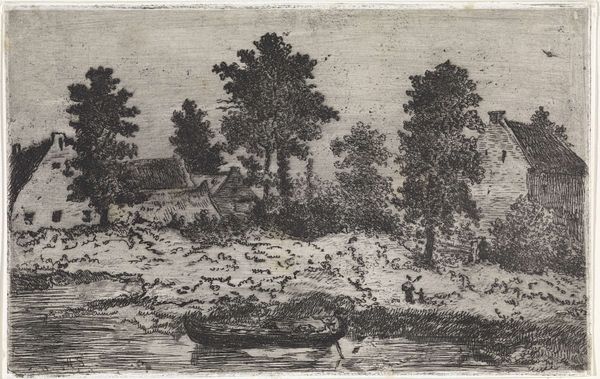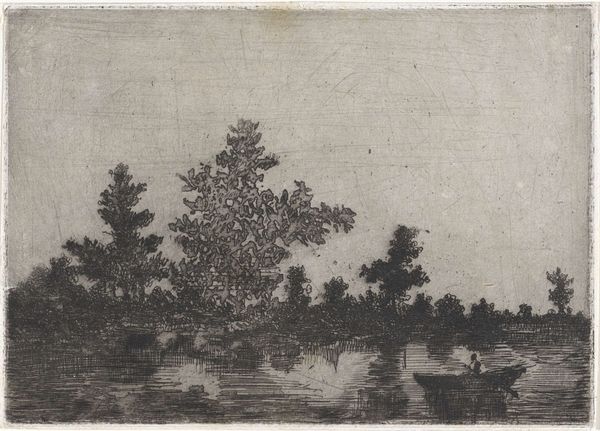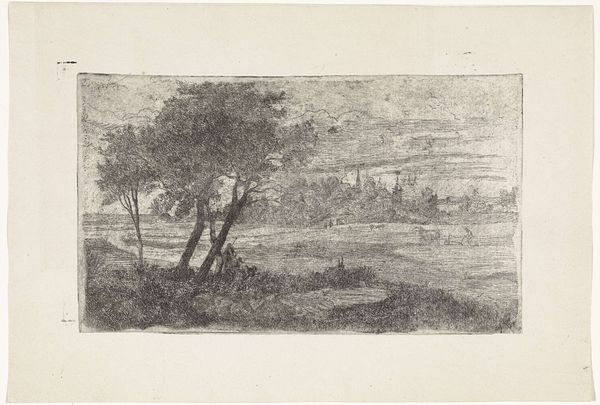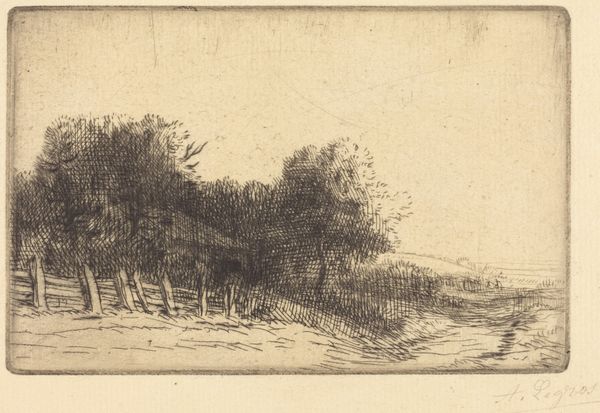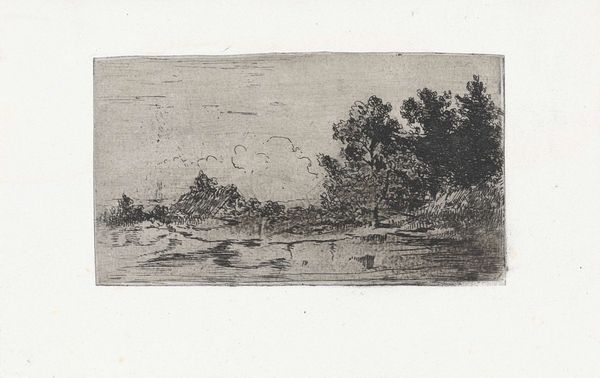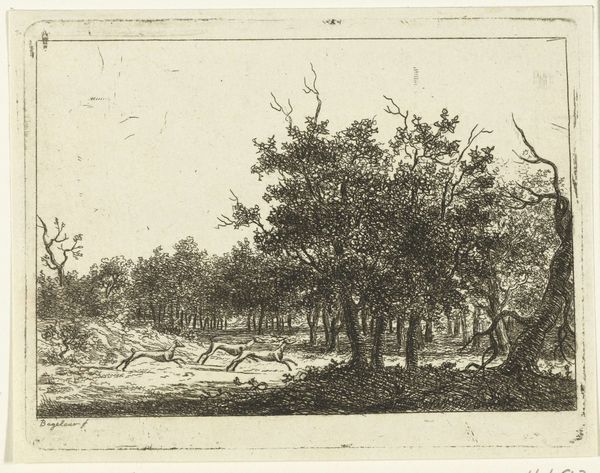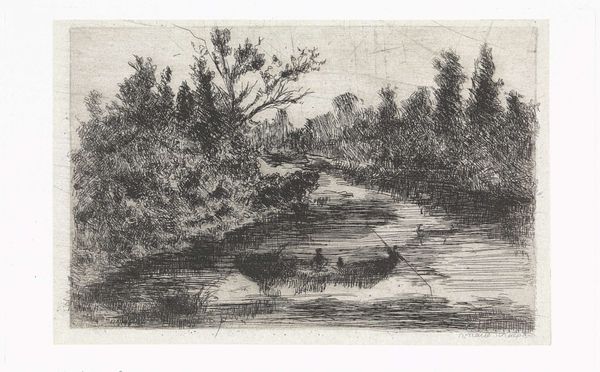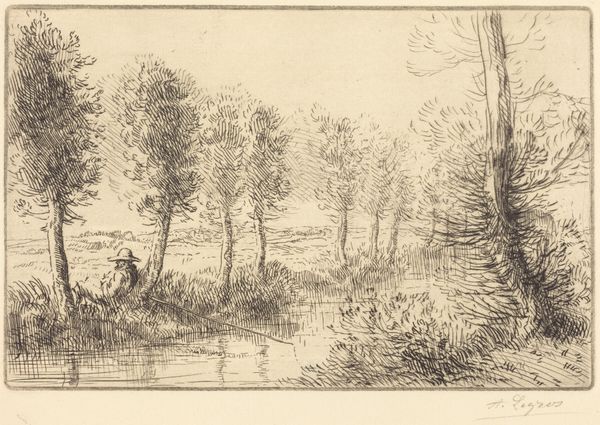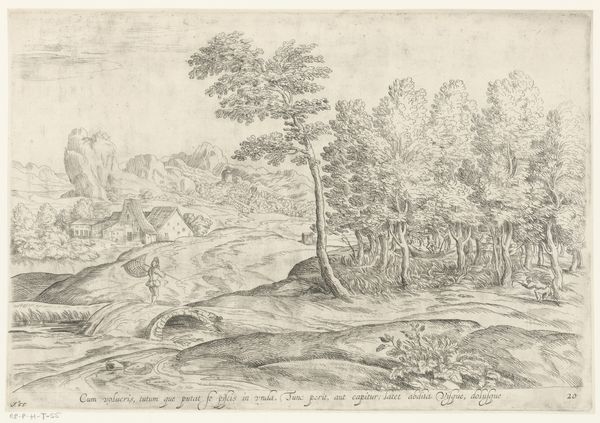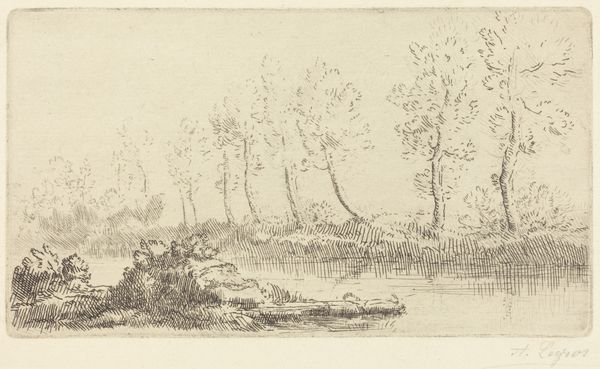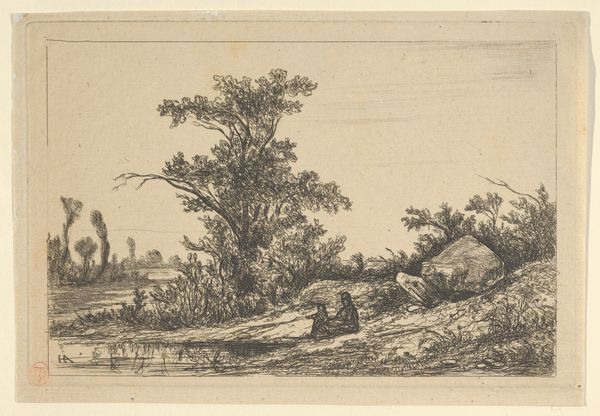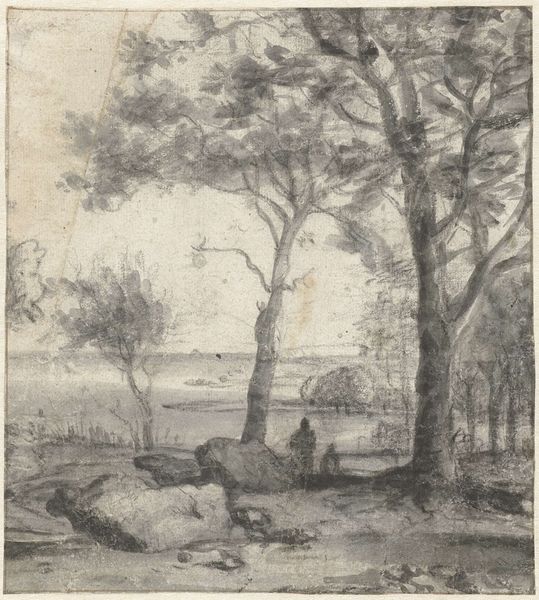
print, etching
#
lake
# print
#
etching
#
landscape
#
line
#
realism
Dimensions: height 132 mm, width 194 mm
Copyright: Rijks Museum: Open Domain
Editor: This is "Klein meer met boot en twee versperringen," a landscape etching by Arnoud Schaepkens, made sometime between 1831 and 1904. The tonal range feels very limited, and yet the overall image gives an impression of a full, enveloping atmosphere. What stands out to you? Curator: I notice the repeated motifs of horizontality -- the boat, the fallen trees, the implied lines of the landscape in the background – how do these visual repetitions evoke a sense of stillness or constraint, almost like the memory of a dreamscape? Does this image speak to a particular cultural memory? Editor: That’s a very insightful observation. The horizontal lines certainly seem to flatten the space. I suppose, given the Dutch cultural connection to water, it speaks to the psychological weight of their dependence on, and defense against, nature. What is this artist trying to convey with the addition of the small figure on the boat? Curator: Think about the boat's placement in relation to those fallen trees. Is it a barrier, perhaps, a symbolic obstacle on a journey? Consider how landscapes were used symbolically during the Romantic era; does this image conform to, or challenge, that established visual language? Perhaps we are witnessing the cultural anxiety surrounding humanity's control over the natural world. Editor: Interesting. So, beyond the picturesque scene, we have layered meanings concerning humanity and nature. That interplay enriches my understanding. Curator: And note the use of light - it softens those barriers, blurring any solid readings. Ultimately the piece creates a mood, allowing our readings and cultural memories to shift within it, guided by familiar, repeated, universally shared motifs. Editor: I now view this landscape not as just a scene, but as a powerful exploration of enduring symbolic concepts and the complex psychological relationship between humanity and nature. Curator: Indeed, seeing it in a dialogue, the etching becomes more than just a landscape, offering an investigation into a collective visual consciousness.
Comments
No comments
Be the first to comment and join the conversation on the ultimate creative platform.
